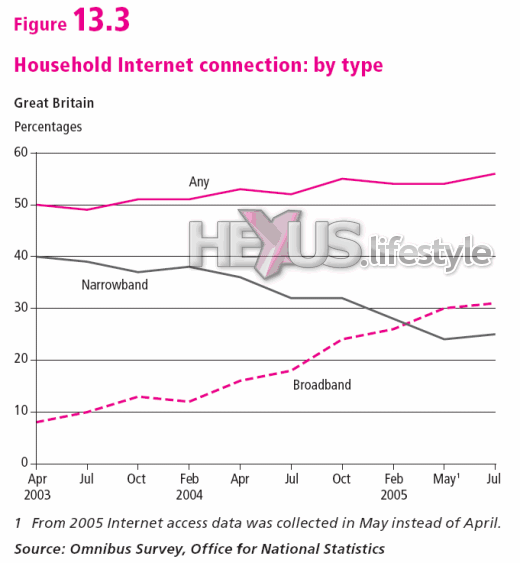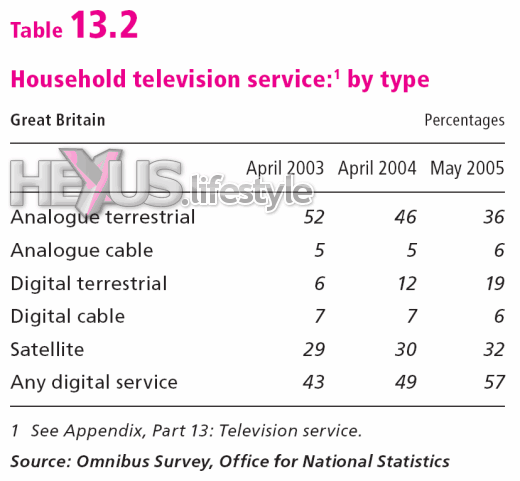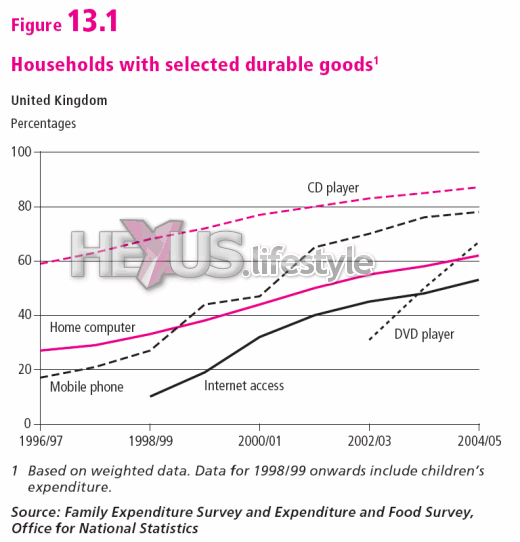If statistics prove anything (and statistics prove that they do) then there should be some revealing information in the latest report from the government's Office for National Statistics - Social Trends 2006 - even though some of the figures quoted do look a little ancient.
The 242-page report covers everything from population figures and educational trends through crime, housing, health, environment and transport, finally reaching, in Section 13, the areas about which HEXUS.lifestyle is most interested - Lifestyles and social participation. The eye-grabbing headlines from this section are:
• In Great Britain, the
proportion of households with a broadband connection rose from 8 per
cent to 31 per cent between April 2003 and July 2005
• A digital television service was received by 57 per cent of households with a TV set in Great Britain in May 2005 - up from 43 per cent in April 2003
• A digital television service was received by 57 per cent of households with a TV set in Great Britain in May 2005 - up from 43 per cent in April 2003
Looking closer, broadband had overtaken dial-up in the first few months of 2005, perhaps by April.
And, while satellite remained the most widely used means to receive digital TV (at 32 per cent) back in May 2005, most of the digital TV increase came from digital terrestrial. This rose from six per cent of household to 19 per cent, while digital cable remained little changed at around six per cent. Looking at the wide availability today in Feb 2006 of Freeview boxes (and their keen prices), we'd guess that digital terrestrial must be closing on satellite fast - and also gaining fast on analogue terrestrial.
ONS figures show that ownership of DVD players, CD players, computers and mobile phones rose substantially over the last five or six years. The proportion of UK households with a DVD player jumped from 31 per cent in 2002/03 to 67 per cent in 2004/05 - still not quite reaching CD's 87 per cent, though by now, we reckon that target (or beyond) can't be far off.
Between 1998/99 and 2002/03, the percentage of households that had an internet connection grew by nine per cent a year, while the figure for mobile phones was 11 per cent - each increasing by four per cent between 2002/03 and 2004/05.
Perhaps not surprisingly, three-quarters of the growth in digital-TV ownership occurred in the normal peak-buying seasons around Christmas, rising by seven percentage points between October 2002 and February 2003, five points in the same period 12 months later, and by eight points between October 2004 and February 2005 - figures aren't included for last Christmas/new year.
Home broadband connections have almost quadrupled since 2003. The proportion of households in Great Britain with a broadband connection rose from eight per cent in April 2003 to 31 per cent in July 2005.
Over the same period, the number of households with a dial-up connection fell from 40 per cent to 25 per cent. Overall, households with an internet connection of any type increased, from 50 per cent to 56 per cent.
In February 2005, the most popular online activities were email and looking for information about goods and services (each 85 per cent) and general browsing (72 per cent). Broadband users enjoy a wider variety of online activities than dial-up users - with more of the broadband gang accessing email than do dial-up users (89 per cent vs 85 per cent) and looking for goods and services online (91 per cent vs 83 per cent).
Although the proportion of homes with an internet connection has grown, in 2004/05 almost half of households in the United Kingdom weren't connected - with lower-income groups most likely to be missing out. Of households in the top 20 per cent for income, 87 per cent had an internet connection, compared with 18 per cent for the lower-income group. This gap, of 69 percentage points, has massively widened from 1998/99's 24 per cent.
Internet use has been growing among all age groups but the gap between between younger and older adults has been getting greater. Between 2001/02 and 2004/05 internet usage by all groups under 65 years old grew by around 15 per cent but was only seven per cent for those of 65 and over.
There's lots more worrying, revealing and fascinating stats available in the report on a wide variety of subjects, so once you've downloaded and read it all ("cough!"), we fully expect to hear from you over in the HEXUS.community.


















